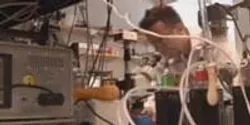Biological Sciences

Linda Wegley Kelly, PhD, a marine microbial ecologist in the Department of Biology at San Diego State University, talks to contributing editor Tanuja Koppal, PhD, about what has changed in the field since 2001, when she started working in the lab. While genomic and sequencing technologies have become easier and cheaper, the work on the bioinformatics side has now become more tedious in terms of the volume of data that needs to be analyzed. While systems for sample collection and storage have become convenient and customizable, the use of automation in microbiology remains fairly limited. Contamination still remains a cause for concern, and protocols have to be rigorously outlined and implemented.

When you go to bed and how long you sleep at a time might actually make it difficult for you to stop worrying, according to researchers at Binghamton University. The study, led by Binghamton Anxiety Clinic Director Meredith Coles and graduate student Jacob Nota, found that people who sleep for shorter periods of time and go to bed very late at night are often overwhelmed with more negative thoughts than those who keep more regular sleeping hours. The findings appear in Springer’s journal Cognitive Therapy and Research, being published this month.

IBM's SoftLayer cloud-enabled World Community Grid to provide free virtual supercomputer power to The Scripps Research Institute to speed screening of promising chemical compounds.

A preliminary university investigation has revealed that University of Texas (UT) environmental health and safety officials disposed of multiple brain specimens in approximately 2002 in accordance with protocols concerning biological waste, according to a Dec. 3 statement by the school.

Salk researchers tinker with a time-restricted diet in mice and find that it is remarkably forgiving.

A Creighton University physicist was part of an international team which explored the process involved in how cells combat bacterial infection and discovered new capabilities of cells fighting an infection. The team’s research was published Nov. 24, 2014, in the journal, Proceedings of the National Academy of Sciences of the United States of America.

The U.S. Food and Drug Administration finalized two rules on Nov. 25 requiring that calorie information be listed on menus and menu boards in chain restaurants, similar retail food establishments and vending machines with 20 or more locations to provide consumers with more nutritional information about the foods they eat outside of the home. The rules are required by the 2010 Patient Protection and Affordable Care Act.














